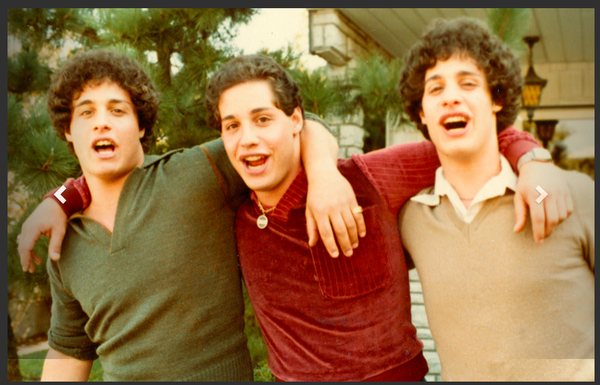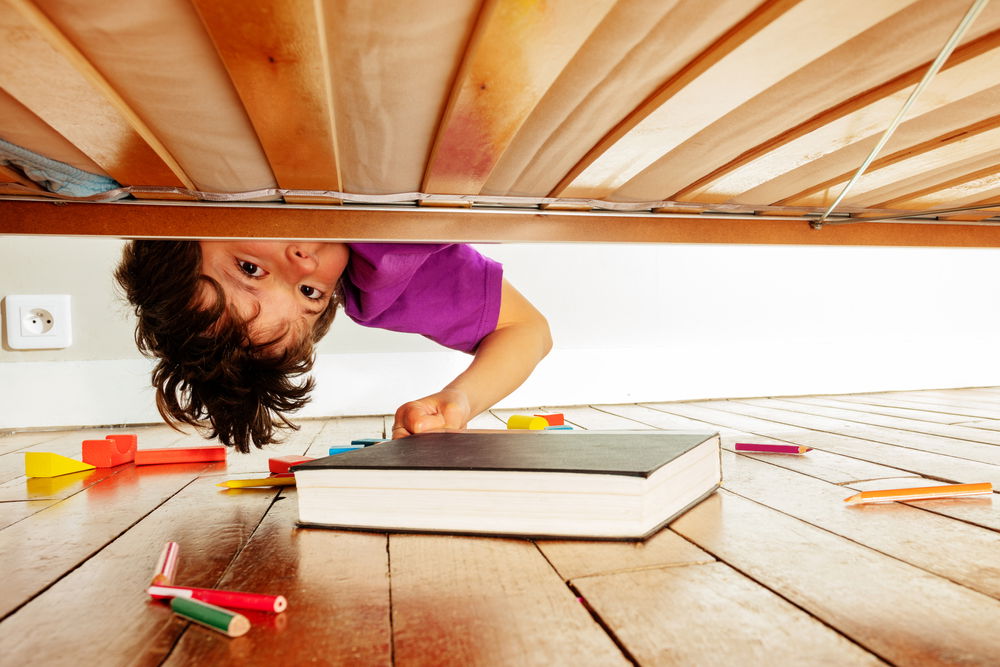Highlights
A culture of intimacy and close communication dominates the landscape of American parenting today. In interviews my colleagues and I conducted with 100 parents around the United States, parents discussed communication and intimacy more than any other topic we didn’t ask them about directly. Their comments reveal a strong desire—even a felt obligation—for warm, continual, spontaneous, and anti-authoritarian communication with their children.
Jonathan, a married father who works as a nurse and has four kids, says the joy, intimacy, and affection his children show him is the greatest part of parenthood: “It’s joy that they bring…coming home from work and having your children run up to you with arms open wide and say, ‘Daddy’s home!’ There’s just something about that that’s joyful.”
Because he feels very close to his children, Jonathan says that “receiving that kind of love and affection unrequested, unrehearsed, un-demanded is very much a joy.”
Felicia, a single mother who works in food services, says that the best thing about having children is “them coming to you for certain things, and the love that they give.” She explains that her daughter writes her a lot of notes that say, “I love you Mommy” and puts them under her door. Felicia appreciates these gestures of intimacy: “Especially when they carry the little pictures and notes that they write and leave for you, ‘cause my kids, they’re really sentimental. It really makes me proud because I know that my kids, they love me and they care about me and I’m important to them.”
In addition to appreciating these emotional rewards, parents expressed the desire to communicate freely with their children, often contrasting this to their own parents’ stricter disciplinary approach.
James, a married father of three sons, says the hardest part of raising kids is “teaching them right from wrong.” He says he does this differently than his parents did: “it’s more, instead of whipping, more talking. Sitting down with him, talking with him about a lot of stuff that he’s doing…When I grew up and messed up you got disciplined; you don’t get disciplined [now].”
He says that with his own son, he’d “rather sit down and talk with him than raise my voice with him.” James thinks that when they sit down and talk “man to man,” his son “respect[s] that more” and they “can communicate better about it.”
Adults have not always sought this level of communication and intimacy with their sons and daughters.
Although this feels quite natural and “right” to most parents today, adults have not always sought this level of communication and intimacy with their sons and daughters.
Historically, children were “economic assets”: they served as workers, contributing to the household economy by performing essential tasks around the farm. As the United States shifted from an agrarian society to a more industrial one in the late nineteenth and early twentieth centuries, children started to work in factories, which meant they were still expected to contribute to the family income in a way analogous to their economic contribution on the family farm.
But the emergence of child labor laws reflected a change in society’s expectations for children, and by the 1930s children’s economic contributions to the home had decreased significantly. As Viviana Zelizer point out in Pricing the Priceless Child: The Changing Social Value of Children, proponents of child labor laws argued that “true parental love could only exist if the child was defined exclusively as an object of sentimentality and not as an agent of production.” As children decreased in economic value, they increased in sentimental value, which gave rise to notions of the “priceless” and “vulnerable” child. Children moved from being economic assets to being emotional assets.
The field of child psychology developed to reflect and reinforce these changes in children’s roles, as historians Steven Mintz and Susan Kellogg have documented. Psychologists began to focus on the development of the child’s personality, which brought about distinct changes in childrearing; strict discipline gave way to “a more humanistic and empathetic approach.” The new view of children meant new roles for parents: they became expected to fulfill the emotional and psychological needs of their children. The child-parent relationship took on a new shape and, ultimately, had less to do with the authority of the parent than the sentimental worth of the child and the development of the child’s personality.
The contemporary ideal of the intimate parent-child relationship arises from our specific social and economic climate, which focuses on the child’s (and the parent’s) emotional well-being, self-identity, and individuality.
This warmer culture of intimacy has a certain compelling and obligatory force to it. Parents are not exactly sure why it’s better than before, but they think it is, and they feel pressed to comply.
One dad described a strong cultural norm for communication with your kids this way: “you’re just supposed to do it…It’s important; communication is important, that’s what everybody stresses. That’s what Oprah, the psychologists, and everyone else says.”
A mom struggled to explain why she felt being close and communicating with her kids was so important: “Common knowledge and conventional wisdom is to talk to your kids and be open. I don’t know what they get out of it because I didn’t have that [with my mom] and I feel like I did okay, but I know people say you should talk freely. I’m sure it’s a good idea, but I don’t know what you get out of it. It’s a great question.”
‘Open lines of communication’ are often contrasted with certain forms of discipline used in decades past, but they are used toward the same end.
So parents experience emotional rewards from close relationships with their kids, and they know that Oprah and the experts say that good parenting requires lots of talking. And yet parents’ old role as authoritative disciplinarians has not disappeared, for parents use closeness and communication and intimacy to influence and direct their children. “Open lines of communication” are often contrasted with certain forms of discipline used in decades past, but they are used toward the same end: leading children in the direction the parents think they should go.
Felicia hopes that her daughter will continue to talk to her, especially as she reaches the teenage years: “I hope she can, you know, come to me and talk to me about certain things, like boys and stuff like that.” Felicia was pregnant at fourteen and had two children before she turned eighteen, and although she says she wouldn’t trader her kids for anything, the pressures and strains of being a teenage mother are not something she wishes on her daughter. She hopes that being close with her daughter will help her to take a different path: “I didn’t go to my mom about that stuff and I want her to come to me and talk to me.”
Claudia, a married Hispanic mother with of six, says that she felt “always scared, and always nervous” when she was growing up because she was afraid of her parents. She says that she and her brother never really got into trouble, but “I can honestly say it was based out of pure fear.” Claudia believes her parents didn’t “put knowledge into us; they just put fear, and that kind of makes you nervous and scared.” She contrasts her own relationship with her kids and says, “I’m glad that my kids can just talk” without being afraid.
Claudia takes pride in the fact that that her kids are comfortable talking to her about anything. She uses these close relationships to influence her children’s behavior. When her daughter was 15 years old, Claudia noticed she was “tired every day with bags under her eyes…losing weight.” Claudia thought she was doing drugs. Rather than getting angry or violent, as her parents might have done, she went on the internet and printed photographs of people who were doing drugs. She showed them to her daughter and said, “This is what meth does to you.” It turned out her daughter was not on drugs but was having issues with a “jerk boyfriend.” But Claudia thinks her open lines of communication enabled her to discuss the situation with her daughter: “but things like that, my parents never showed me, never taught me why. ‘Just don’t do it because I said so and that’s it.’”
As these examples show, parental intimacy and communication appear to be a tool for a certain kind of discipline. It is more affectionate and warmer for sure, and perhaps better characterized as “influence” or soft power. Nevertheless, it remains a form of parental authority.
This is not to suggest that this new focus on intimacy and communication is necessarily bad for kids—it’s undoubtedly a kinder, gentler approach. Yet this new culture of intimacy, like any culture, entails a set of compelling norms to which parents must conform. And even as parents focus on these newer forms of emotional rewards and intimacy, there’s still a lot of “old-fashioned” (albeit subtler) authority, discipline, and control at the heart of the parent-child relationship.
Jeffrey S. Dill teaches in the Templeton Honors College at Eastern University in St. David’s, Pennsylvania.















